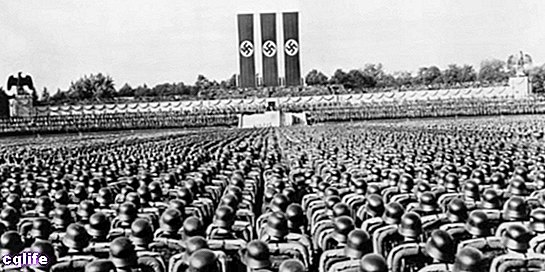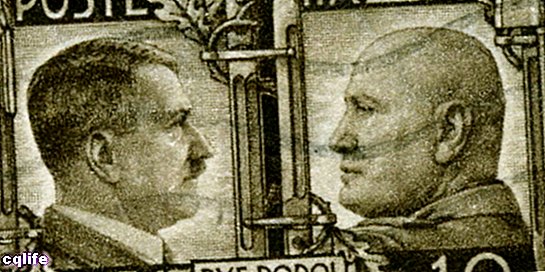- What is totalitarianism?
- Totalitarianism and authoritarianism
- Characteristics of totalitarianism
- Examples of totalitarianism
We explain what totalitarianism is, its characteristics and differences with authoritarianism. Also, historical and current examples.

What is totalitarianism?
Totalitarianism is a system of government and a practice politics whose fundamental principle is the absolute and unrestricted exercise of can by the Condition of a nation. Severely restricts freedoms individuals and builds a homogeneous, implacable and coercive model of society.
Totalitarianism is a specific form of dictatorship. It can be understood as a method organization of the State in which its four components are rigorously administered (territory, population, Justice Y public powers).
In this context, there is no possible opposition and absolutely everything is submitted to the designs of the ruling party. It is obviously incompatible with any form of democracy, since it puts the State itself above all else, making it an end in itself.
It is quite possible to find examples of totalitarianism from the Antiquity. However, they mostly emerged in the 20th century. It was then that the term was coined within the political struggle and later it was assimilated by the university academy.
Philosophers such as Jacques Maritain (1882-1973), Max Horkheimer (1895-1973) or Hanna Arendt (1906-1975) devoted part of their years of study to him, tracing him in both regimes capitalists as socialists.
The first time the term "totalitarianism" was used, it was not in the same sense that we use it today. This is what the Italian dictator Benito Mussolini (1883-1945) called his fascist doctrine, whose political slogan was "Everything in the State, everything for the State, nothing outside the State, nothing against the State."
Totalitarianism and authoritarianism

Although totalitarianism and authoritarianism are forms of dictatorship, and they are political systems that grant unlimited power to a Leader charismatic, they are not at all synonyms. The difference has to do with the political project that each one proposes, whatever ideological sign it may be.
Authoritarianism often implies the idea that a rigid and martial order is necessary to preserve the state of affairs. The dictator or authoritarian leader is exalted as the ideal being to have absolute power. Those who oppose will suffer the consequences, while those who consent or do nothing will be able to continue with their own business, if they are lucky.
This does not mean that it is good or better, but that authoritarianism is a conservative form of management of the State. For this reason, it is more frequent (but not exclusive) to find ideologically conservative regimes in this position.
On the other hand, totalitarianism starts from the need for social engineering, that is, for a forced and controlled restructuring of the State and the society, for which the single party must occupy absolutely all the spaces of life.
In the face of totalitarianism, it is difficult not to be affected, and although there are also often authoritarian situations in a regime of this type, usually it is not the leader who supports everything, as in the case of autocracies, but the party. That is why totalitarian dictatorships do not usually end after the death of the supreme leader, while traditional dictatorships do.
Another clear difference has to do with the need for authoritarianism to invest the supreme leader with the robes of authority (legitimate or not), naming him president, dictator, etc.
On the contrary, in totalitarianism, personalist structures are usually abolished in favor of a Council or an Assembly of the party, whose secretary general may be the supreme leader, or this may be a kind of spiritual leader, as was Ho Chi Minh. in North Vietnam during the Vietnam War (1955-1975).
Characteristics of totalitarianism

Totalitarianism can be characterized as follows:
- It is a dictatorial management system of the State, in which individual freedoms and freedom existence The individual itself is perceived as secondary to the power of the State.
- A charismatic figure is often praised as supreme leader, granted inordinate and prolonged power within the system, and often revered in an almost religious way, especially after his death.
- Totalitarian regimes are usually governed by a single party (usually any political opposition is prohibited) that has full control of everything and that ends up merging with the State itself. Thus, party, government, armed forces and supreme leader operate as a single entity.
- The State is an all-powerful entity in this type of government. It manages all aspects of civic life and does not have any internal controls regarding what it can do.
- More or less dangerous and more or less cruel processes of social engineering tend to take place, eliminating undesirable individuals and applying severe restrictions and prohibitions, often understood as “re-education”.
- Policies of censorship, social control and expropriation of the private property, so that the State can manage absolutely everything with a single criterion.
- The human rights Fundamentals and civil liberties are rarely fully respected in totalitarian regimes. In the name of justice or of sovereignty or the party any kind of crimes can be committed.
Examples of totalitarianism
Even today there are totalitarian regimes like North Korea.Examples of totalitarian regimes are the following:
- The fascist regime of Benito Mussolini in the Italy of the WWII.
- The Nazi regime of Adolf Hitler in the III German Reich during World War II.
- The Soviet communist regime headed by Josef Stalin in the Soviet Union during the Cold War.
- The Maoist regime of Pol Pot and the Khmer Rouge in Cambodia (renamed Democratic Campuchea) between 1975 and 1979.
- The North Korean regime led since 2011 by Kim Jong-un, under the figure of Supreme Leader and Supreme Commander of the North Korean People's Army.
